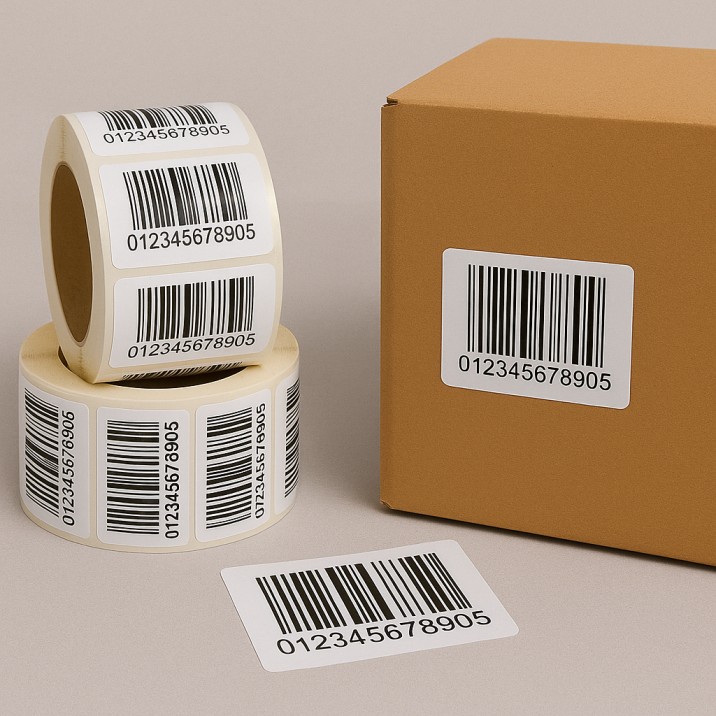Barcoded Labels
Custom Barcode Labels from £19.95
Our custom-printed barcode labels are the perfect solution for businesses that need reliable identification, stock management, and asset tracking. Printed with precision, these labels ensure accurate scanning every time.
Uses for Barcode Labels
- Stock control and inventory management
- Retail product labelling
- Asset tagging and equipment tracking
- Document management and filing systems
- Warehouse and logistics applications
- With no minimum order quantity, you can print the exact number of barcode labels you need—whether for a small project or a large-scale operation.
Why Choose Our Barcode Labels?
- Supplied on rolls or sheets for easy application
- Printed with sharp, scannable detail for accuracy
- Durable materials, including waterproof and tear-resistant options
- Permanent adhesive for secure, long-lasting use
- Custom sizes and layouts available to suit your needs
- Fast turnaround and urgent delivery options available
Design your Barcode Labels now or upload your artwork for quick, professional printing.
What Our Customers Say
"Excellent service! Great help with design, advice about cost-effective production and amazingly fast delivery. Would absolutely use this company again, and would highly recommend them."
"Multiple customer of this amazing print company. Absolutely delighted with speed and accuracy of their work as well as sensible prices."
"Great company. Responsive, accurate and reasonable. Have been using them for several years."
"I order for my business and Sticky Labels have been my label provider for the last 12 years. The team offer fast and efficient service, I am very happy with everything, thank you."
Frequently Asked Questions
Yes, there’s no minimum order—whether you need a handful of labels for testing or a full production run, we can print exactly what you require.
We can print a wide range including EAN, UPC, Code 128, and QR codes. Just provide your barcode data or upload your artwork.
We've been printing labels since 1973 and barcode labels since late 1980's.
Absolutely. Our barcode labels are printed with high precision to ensure accurate and consistent scanning.
Yes, you can add text including product names, numbers, or logos alongside the barcode for easier identification. You can even add consecutive numbering to products from out Discount Labels range.

 Login
Login Cart
Cart


